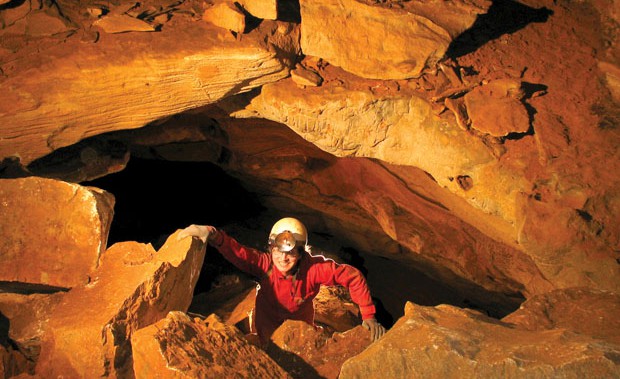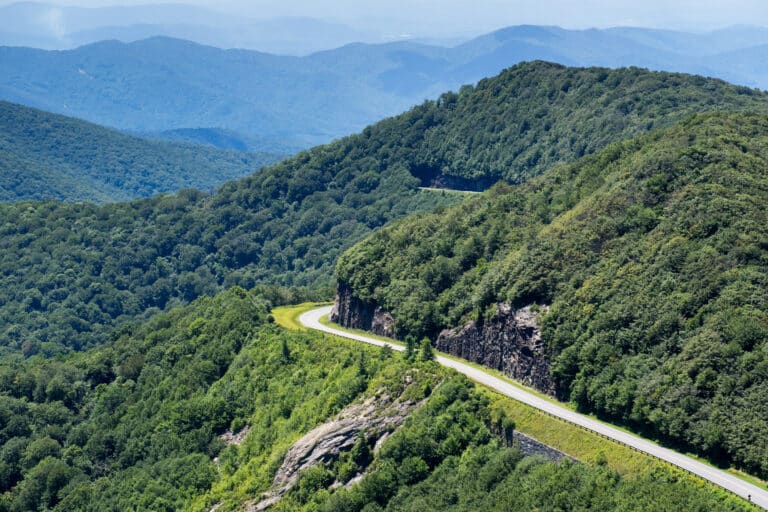“The problem with this,” Toomey says, “is if these animal populations are damaged, they don’t recover very well.”
So it doesn’t help that part of the Mammoth Cave system is directly beneath Interstate 65.
“Anytime a car accident occurs, toxic chemicals can spill right into the cave’s watershed. Even small spills can destory populations of the cave’s crayfish, cave fish, and bats,” says Toomey. “The situation is worse for endangered animals like the Kentucky cave shrimp, where spills and accidents can wipe out the entire species,” he laments.
The volunteer cavers at Mammoth make it possible to track these populations before such an accident occurs. Plus, their work in mapping and surveying creates access points for first responders and clean-up personnel after such an accident occurs. Without the baseline data that comes from exploration, the park would have no way of managing its own wildlife.
Caving for Fun
Scott House and his teammates provide invaluable support to both the research community and the national park service. But as House points out, exploring Mammoth Cave is also just extremely cool.
Aptly named, Mammoth Cave is more than twice as long as the second longest cave in the world. It was created by the perfect recipe for a cave system: a long, thick layer of limestone; a cap of sandstone over the whole area; sinks and holes for water to permeate; and a lot of time.
The cave’s history is also humbling. It was first used by people about 10,000 years ago and first deeply explored by people about 5,000 years ago. Archaeological evidence shows that Native Americans walked for miles inside the cave for the sole purpose of exploration, says the University of Kentucky’s George Crothers. “Like humans anywhere, if you saw a hole in the ground the size of the entrance of Mammoth Cave, and it just went on and on, you would be enticed or tempted to continue. Maybe each time you went in there a little bit farther…”
Mammoth Cave is still as exhilarating today as it was thousands of years ago because of the sense of wonder that it keeps alive. In a time when we can see the street view of a corner halfway across the world with Google Maps, it’s exciting to know that deep down beneath the sandstone and limestone of middle Kentucky, there still lies a place shrouded in mystery.
Fortunately, that sense of wonder is here to stay, according to Rick Toomey. Although there are about ten expeditions charting new territory each year, it doesn’t look like the cave system will be completely discovered anytime soon.








